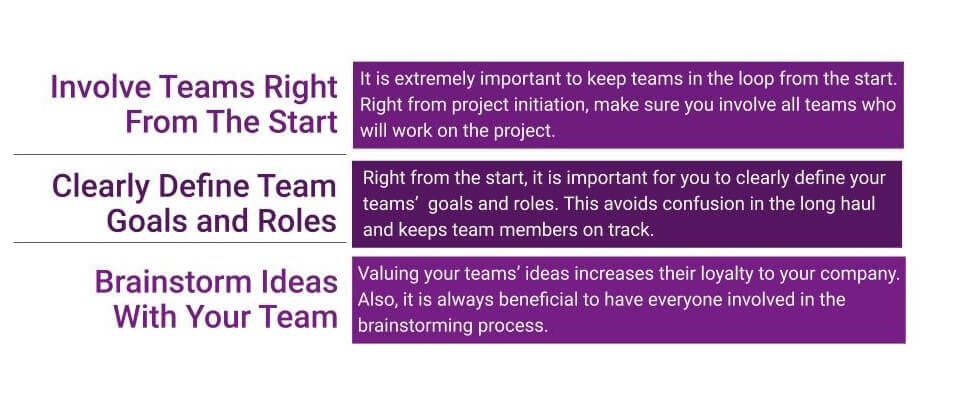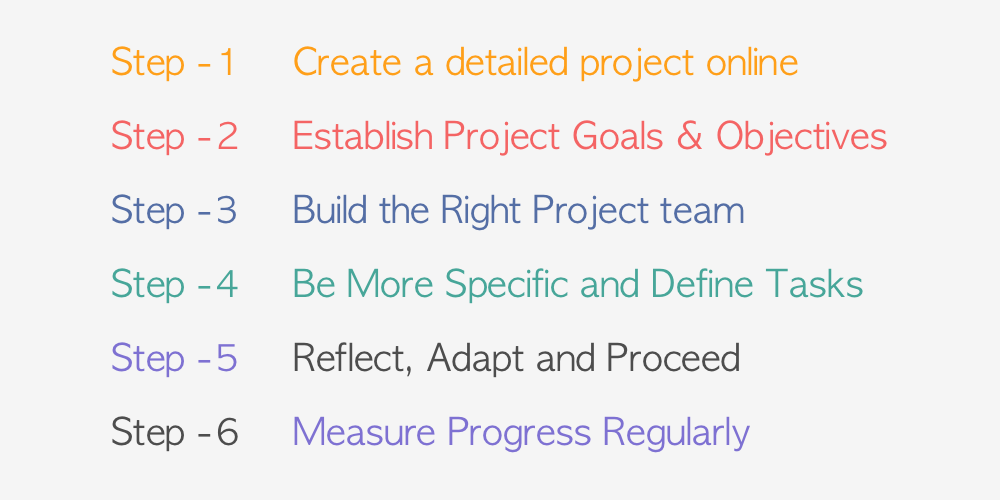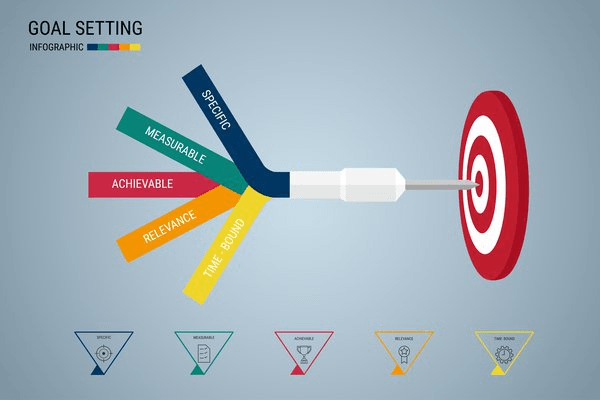Imagine you have a diverse set of people in your team, each coming from different backgrounds.
They have a different way to work, and their work ethics might differ from what you have set for yourself.
Now, as a project manager, how would you feel about this?
There are two ways to deal with such a situation:
- The Bossy Way Out
You can set your priorities straight and give your team a hard time if they don’t follow your terms to the Z. - The Boss Next Door
The other way is to interact with your project team members on a daily basis and be their right-man whenever they need you.
Which method do you think is better?
The second one, right?
That’s a great start!
Among many things project managers are responsible for; ensuring the right project and team management is one of the most important responsibilities.
But, whether you are new to management or have your fair share of experience, it may be difficult to visualize all the challenges that can come your way.
So, it is essential to have a structured approach that helps you keep your project team on course, and this blog post will help you find that out.
But, before we start, let’s talk about What is project planning?, what’s the first thing that comes to your mind?
- Setting clear goals?
- Defining project objectives?
- Assigning tasks to relevant teams?
- Allocating resources properly?
….but did you think about keeping your teams in the loop from the start?
According to a PMI survey, poor team communication is one of the key reasons for project failure.
So, how do you really produce a perfect project plan?
Well, by keeping your teams in the “project plan” checklist!
In this chapter of our PM guide, we talk about two things:
- 3 ways you can prepare your team to plan projects.
- 6 ways you can manage your teams efficiently.
So, let’s cover both these topics in detail.
3 Ways to Improve Project Team Management & Plan Projects
The one thing most project managers tend to overlook is addressing their teams’ concerns. From keeping them in the loop to resolving team issues, project managers don’t pay heed to such obstacles and assume the project will be executed successfully.
But, that is not true.
Teams need to be nurtured and trained to ensure efficient project execution. So, let’s see the three ways you can improve project team management.

Involve Teams Right From the Start
Simply assigning project tasks to teams without discussing the project goals, objectives, and how the milestones are going to be achieved spells disaster!
It is not only important to involve teams in the project planning process, but also keep them in the loop during the entire project cycle.
From project initiation where clients explain their requirements and project details to project execution where the project plan is put into play – team members need to be a part of each process. This gives them clarity and makes sure they deliver work on time and with the required quality.
And, how does a project management software help achieve this? Through team collaboration features such as:
- Email notifications
- Task comments
- Shared calendar
- File sharing
…team members can communicate with each other and stay in the loop regarding project updates and deliverables.
Clearly Define Team Goals and Roles
Most projects fail due to unclear goals and roles. So, it is important to discuss with teams:
- What exactly they will be working on
- How will they be achieving their goals
- What is the role of each team member during project execution
- What kind of work quality is expected from the team
Doing so not only gives clarity to the team regarding the project goals and objectives, but also gives them an idea on how to execute the project with quality expected from the client. So, how do you clearly define team goals and roles?
Use project management software to avoid any confusion among teams. You can also document everything and share it with the relevant team members. A few features that help in clearly defining team goals & roles and implement it efficiently include:
- One Dashboard View – You can see who is working on what and work progress.
- Task Assignment – You can assign tasks to relevant teams and give access to only those team members (task permissions).
- Task Comments – You can add task comments to define team goals for a specific task. For instance, in the middle of a project, a new task needs to be assigned that was not previously discussed with the team, you can assign the task and give them a brief using task comment.
Brainstorm Potential Project Risks With Your Team
There is always a possibility of risks cropping up when you plan your project execution strategy. So, instead of doing all the brainstorming by yourself, it is essential to have your team help in pinpointing some potential common project risks.
Not only do fresh minds give you a better idea of the various risks that may occur in the different phases of project execution, but their expertise can also help you plan a way out to deal with these risks.
This brings us to the next question at hand:
How to Manage a Project Team During the Project Lifecycle
When implementing a project, there is a lifecycle that needs to be followed. Now, you need to manage project team members through each phase of this lifecycle.

Let’s check out the six ways in which you can manage a project team in every project phase.
Quick Navigation – Manage Project Team
- Create a Detailed Project Outline
- Establish Your Goal & Objectives
- Build the Right Project Team
- Become More Specific & Define Tasks
- Measure Progress Regularly
- Reflect, Adapt & Proceed
#1: Create a Detailed Project Outline
The first step is to create a detailed project outline.
The project outline is a core document that assists managers to sell a potential project to sponsors and stakeholders.
While working on a project’s outline, it is important for you to define clearly:
- The projects your team will be working on.
- What is the finished project going to look like
- Who is it going to be the target audience
- Why the project is desirable for your business
- What makes it possible, and
- Why it is worthy of your stakeholder’s investment.
Pro Tip:
Every great project should begin with a story. The narrative you build will be invaluable for your organization, as well as for your prospective customers. Be clear on what your project is, what it is going to entail, and what makes it unique. This way, your teams will be on the same page regarding what the project is and what needs to be done to get the desired end result.
#2: Establish Your Goal & Objectives

Next, you need to establish your project goals and objectives.
Ask yourself:
- What is the goal of your project?
- What objectives do you need to accomplish to reach the outcome?
- What do you want the project to achieve for your business or your clients?
- How do you intend to go about achieving that?
You need to be as precise as possible, not only with the broader project aims but also with any smaller objectives contained within the project.
Pro-Tip:
Set SMART goals. They help you set realistic objectives to reach your project goal efficiently. Not only that, but it will also give a higher level of flexibility and creative freedom to your team members and stay task-oriented.
Must Read: The Importance of Goal Setting
#3. Build the Right Project Team

After defining the project and its aim, you need to build the right project team.
- Who are the people helping you with the project?
- What are their roles and responsibilities?
John Rampton, in an article written for Due.com states, “
Typically, your team should include the Project sponsor, experts to define the scope of the project, the Project manager, and the team responsible working on the project.
Pro-Tip:
Crucially, you need to create a team that possesses the right technical knowledge to complete the project. However, you also need people with relevant soft skills and experience.
#4: Become More Specific & Define Tasks

Once your team is in place, you need to become more specific about various aspects of the project. These include:
- Outlining some of the key tasks
- Allocating team members to manage them
- Specifying the delivery of these tasks
These aspects are crucial to determine how the project can be completed within the set deadline. Alternatively, in a more flexible or Agile project, they might mean setting up a basic timeline for initial roll-out.
Pro-Tip:
Get specific about the way collaboration will work, the project’s primary chain of communication, and the kind of project team culture you want to establish. Agree upon a standard budget and project scope and explain to your team to avoid any problem associated with scope creep.
#5: Measure Progress Regularly

Regardless of the way you and your team approach the project, you must manage the progress by communicating with your team regularly. Regular evaluation of completed tasks is also crucial. .
You can use also adopt tools and techniques for managing project teams. For example, you can use a project management software tool like ProProfs Project to streamline all your communications in one place. Using this software can help you break the project down into more manageable parts.
Pro-Tip:
Create milestones to check the progress and ensure the project is on course. If you have adopted an Agile approach, however, progress will be checked more regularly, as its philosophy relies on continuous feedback and adaptation to changing hypotheses.
Try ProProfs Project for Free >>
#6: Reflect, Adapt & Proceed
Finally, the ability to reflect with your teams and adapt to the changes required in the team is taught during training sessions. These sessions usually focus on team building in project management. This is why concepts like Agile are increasingly popular.
While overseeing your project, you need to:
- Regularly reflect on project progress
- Adapt during project execution, when necessary
- Proceed, without the project coming off the rails
Some of the changes to your project may happen organically. So, it is essential to take notes and know what wasn’t a part of project execution from the start.
Pro-TIp:
Respond appropriately to situations where your stakeholders modify their requirements, or your competitors come up with the idea that threatens your project.
Project Team Management: Do it Right With ProProfs Project
There are various factors that are crucial for determining the success or failure of a project. However, the most significant one is your ability to manage your team. In addition to businesses investing in and managing project training, it is important that you take steps to maximize your chances of success by defining aims, building the right team, communicating effectively, measuring progress, and responding to changes seamlessly.
Now that you have a basic idea of how to manage a project team, let’s cover FAQs on team project management and other related topics.
Q1. What skills are needed to manage a team?
- A few skills needed to manage a team are confidence, vision, adaptability, loyalty, sense of trust, and most importantly – effective communication.
Q2. What makes a good management team?
- A good management team appreciates its employees, provide the necessary resources, listen to its employees, and make rational decisions.
Q3. How do you motivate your team?
- You can motivate your team is by setting certain project goals, keeping open communication, and encouraging innovation.
FREE. All Features. FOREVER!
Try our Forever FREE account with all premium features!






